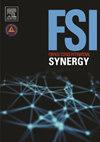量化掌纹比较的强度:大多数识别值低得惊人
Q1 Social Sciences
引用次数: 0
摘要
摩擦脊审查员对手掌印痕比较的报告结论与指纹印痕比较相似,尽管存在几个关键差异。这些包括手掌印的广泛搜索过程,细微稀有度的差异,以及大多数指纹比较不需要的方向挑战。大多数美国实验室使用三结论量表,包括识别、排除和不确定,这些量表没有根据掌纹比较中证据的实际强度进行校准。为了测量掌印证据的强度,本研究使用基于错误率研究中考官反应分布的有序概率模型构建了似然比。许多计算出的似然比是相当适度的,而目前的表达量表可能会高估对同一来源命题的支持强度,最高可达五个数量级。这些似然比有助于校准发音语言,并可能提供分类报告量表的替代方案。本文章由计算机程序翻译,如有差异,请以英文原文为准。
Quantifying the strength of palmprint comparisons: Majority identifications with surprisingly low value
Friction ridge examiners report conclusions to palm impression comparisons similarly to fingerprint impression comparisons, although several key differences exist. These include an extensive search process in palm impressions, differences in minutiae rarity, and orientation challenges that most fingerprint comparisons do not require. Most US laboratories use a three-conclusion scale that includes Identification, Exclusion, and Inconclusive, which have not been calibrated against the actual strength of the evidence in palmprint comparisons. To measure the strength of the evidence of palmprint impressions, the present work constructs likelihood ratios using an ordered probit model based on distributions of examiner responses in an error rate study. Many likelihood ratios calculated are quite modest and the current articulation scales may overestimate the strength of support for same source propositions by up to five orders of magnitude. These likelihood ratios help calibrate the articulation language and may offer an alternative to categorical reporting scales.
求助全文
通过发布文献求助,成功后即可免费获取论文全文。
去求助
来源期刊

Forensic Science International: Synergy
Social Sciences-Law
CiteScore
4.90
自引率
0.00%
发文量
75
审稿时长
90 days
 求助内容:
求助内容: 应助结果提醒方式:
应助结果提醒方式:


